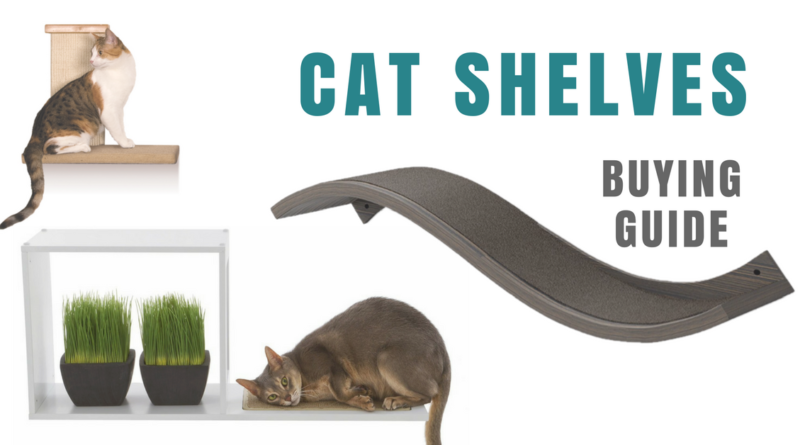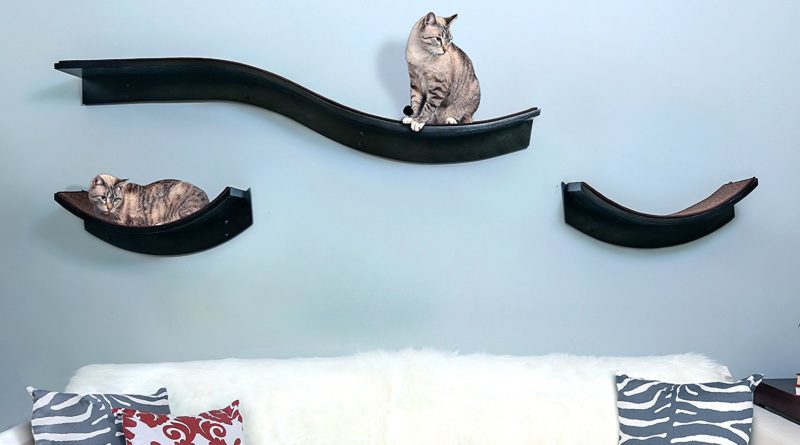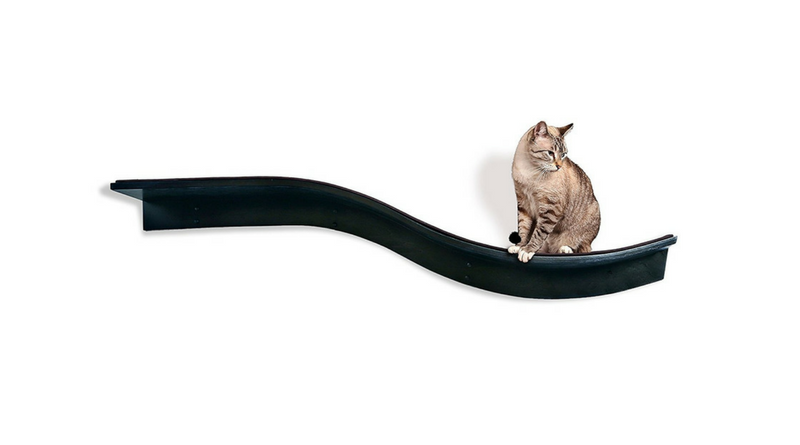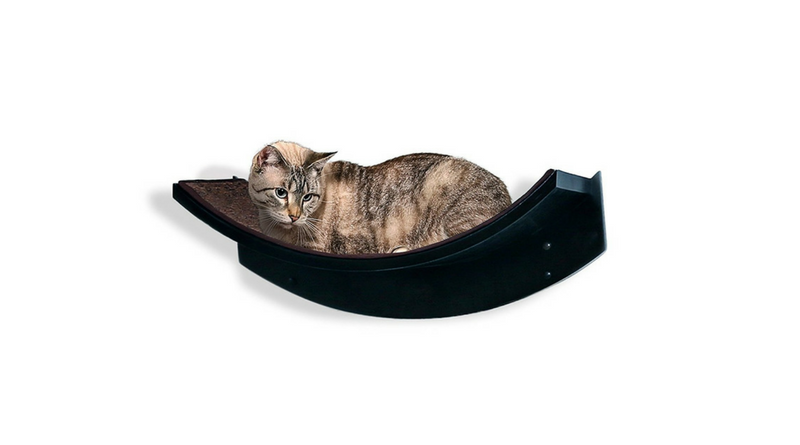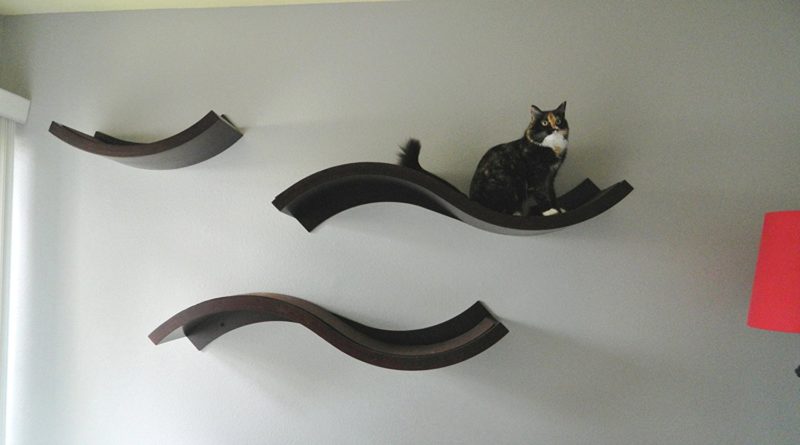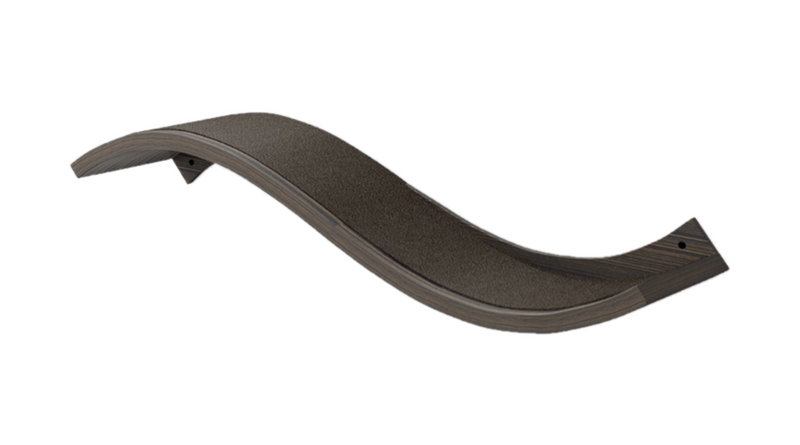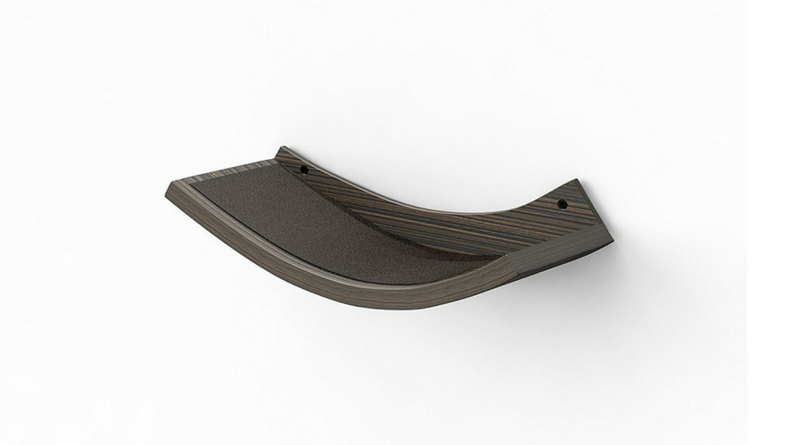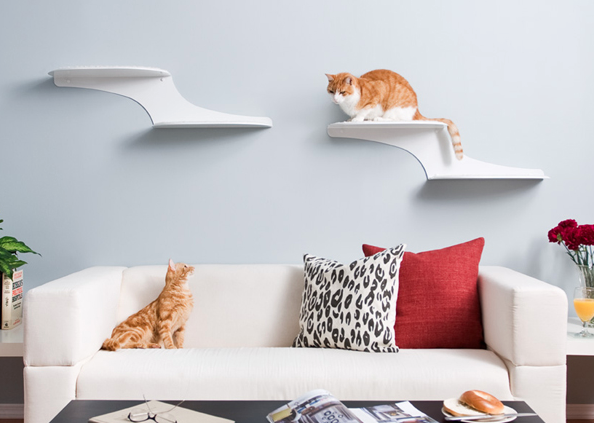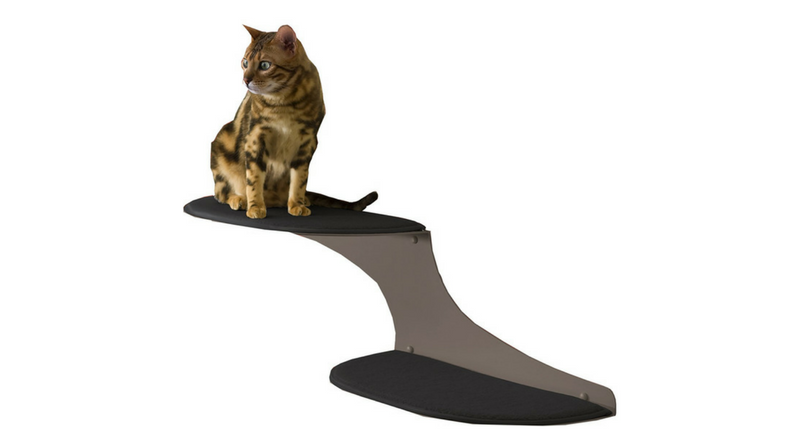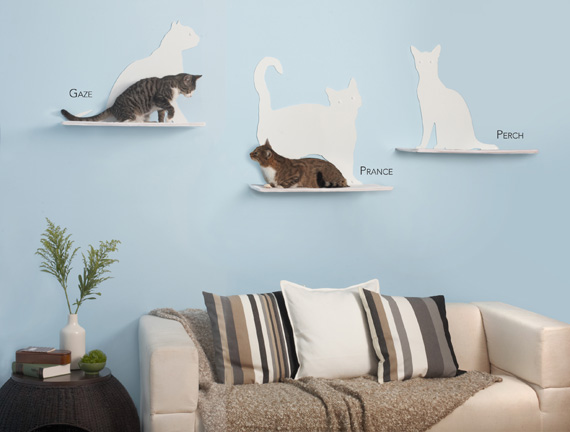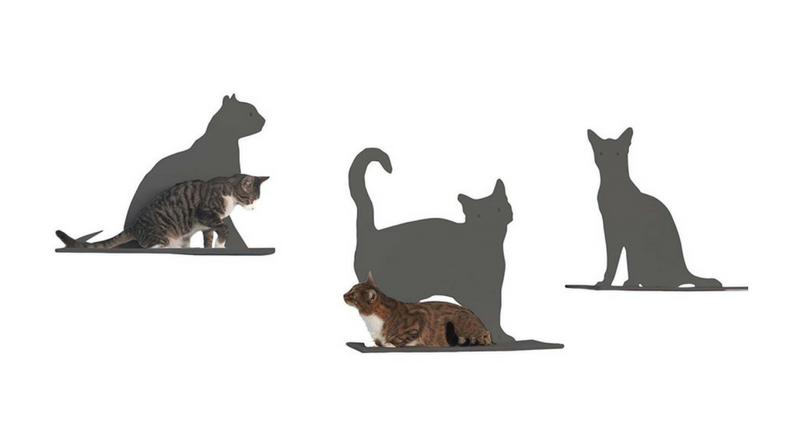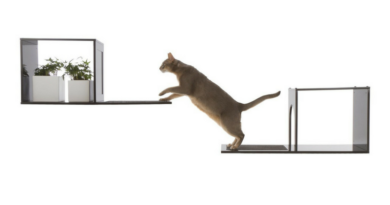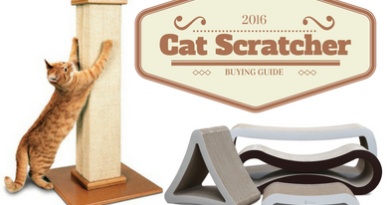Cat Shelves Buying Guide
It’s a widely known fact that cats love being up high. In the wild cats are skillful tree climbers. Whether it’s for safety or for a better vantage point for hunting prey, being up high has many advantages for a wild cat. The same goes for domestic cats. While the threat is less severe than in the wild, even indoor cats need to have an escape from children, dogs, and bothersome humans.
There are a few ways you can provide your cat with this much-needed vertical territory in your home. Cat trees, cat shelves, and cat perches will all do the trick. Not everyone has the floor space for a cat tree, but even small apartments can accommodate cat shelves. There are a number of things you should look for when searching for the perfect cat shelf and we are here to point you in the right direction.
Even if you’re super handy and choose to make your own cat shelves, this guide will help you with the important design considerations. First and foremost we will look at functionality. Stability, size, and safety features will go a long way to determining whether or not your cat will even use a chosen cat shelf. Then we’ll look at things from a cat owner’s perspective. Aesthetics, assembly and ongoing maintenance will be evaluated. And at the end you’ll be ready to pick out the perfect cat shelves for both you and your cat. If you’re already well versed on the topic of cat shelves, skip ahead to our Top Picks.
Functionality
While this isn’t likely the first thing you’ll consider when shopping for a cat shelf, it should be the most important. After all, what good is that fancy cat shelf if your feline companion refuses to use it? Thankfully, cats aren’t too fussy when it comes to being up high. You just have to know what to look for and what to avoid.
Stability
Cats enjoy being up high because that’s where they feel safe. But if that up high spot wobbles or creeks every time they jump on it, they won’t feel very safe, and they probably won’t use it at all. The design of the cat shelf itself and more importantly, the way it is installed are the 2 factors that contribute to stability.
Mounting a Cat Shelf
A cat shelf should always be mounted in at least one wall stud, regardless of what the directions say. Any shelf that is intended to support the weight of a jumping feline needs to be mounted to the structural part of the wall and not just the drywall.
Please take our word for it – a cat shelf that is held in place using only drywall anchors will eventually rip out of your wall after continued use by your cat. We’ve seen it happen and we’ve heard countless stories of it happening to other cat owners. Don’t risk it. Buy a stud-finder and mark the studs in your wall before you get started with mounting your cat shelf.
Cat Shelf Design
Not all cat shelves are created equally. Some are inherently more stable than others. Solid wood shelves like the Lotus Branch and Lotus Leaf, and the Curve, and Stainless Steel shelves like the Cat Clouds and Cat Silhouette shelves are going to be more stable than shelves made of particleboard.
Is the cat shelf designed as a single unit that just needs to be drilled into the wall, or does it rely on mounting brackets to secure it to the wall? Floating shelves look really cool, but they may not be designed to support the weight of your cat.
Next, pay attention to the spacing of the holes. A well-designed cat shelf will have pre-drilled holes spaced 16” apart to align with standard wall beams.
L-Brackets are generally good for stability, but if they are undersized, poor quality, or not appropriately spaced, you could end up with a shelf that is more like a flimsy diving board than a secure platform. If the quality of the brackets is questionable, make a trip to your local hardware store and get replacements.
What Size?
Your standard decorative wall shelves that you might find at IKEA will range from 6” to 12” in depth. Our top-rated cat shelves are 10.5” deep to allow room for your cat to comfortably sit or lay down. Anything shallower than 10” wouldn’t be ideal for lounging.
When it comes to the optimal length, bigger is always better! The more territory you can provide your cat to climb, the happier they will be. But you don’t necessarily have to buy the longest cat shelf on the market. You can always buy multiple smaller shelves and arrange them on the wall like steps. Just make sure your cat has an easy way of accessing them.
Distance Between Shelves
If you’re trying to design the perfect kitty superhighway, take a look at our recommendations for shelf spacing. All cats are different, so you might have to make some adjustments based on your cat’s age and physical health. But here’s a good starting point for the average cat.
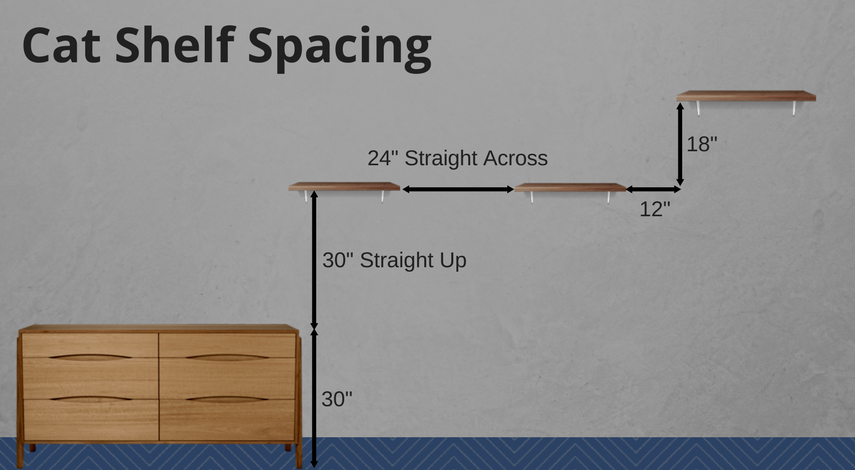
Anti-Slip Shelf Coverings
Cat shelves should come equipped with carpet or fabric coverings to prevent your cat from slipping off of them. A metal or wooden shelf alone isn’t safe for your cat to climb. That’s why you need to look for cat shelves with a non-slip surface, like carpet, felt, or sisal. Unless the cat shelf is specifically designed for scratching, try to pick one with a durable material that won’t be enticing for your cat to scratch.
Owner-Friendliness
Having a cat takes a bit of compromise, particularly when it comes to selecting cat-friendly furniture. A lot of design-conscious cat owners are hesitant to purchase any cat furniture because it just doesn’t fit with their décor. But there’s no better way to keep your cat off your furniture than to get them some furniture of their own. Cat shelving is an excellent choice because there are so many options out there. We’ll take a look at some of our favorite looking cat shelves as well as some common assembly and maintenance concerns.
Aesthetics
We all have our own preferences when it comes to furnishing a home, but most people would prefer that their cat furniture not be the first thing guests notice. There are a plethora of cat shelves on the market that range in style from modern to just plain ugly. We’ll focus on the attractive ones.
There are two brands of cat shelves that have a very similar wave design. And we love them both! This style of cat shelf can easily pass as modern wall art.
Another popular choice is the Cat Clouds Cat Shelf. While these look more like shelves, they are still very artistically designed.
Then there’s the category of cat shelves for people who don’t mind showing off their cat furniture.
Assembly & Installation
Most cat shelves are going to require a comparable amount of effort to assemble and install, but there are a few exceptions. Keep in mind that the higher-end cat shelves are going to be quite a bit heavier than the rest. A few of them weigh close to 20 pounds and will require 2 people to install.
All of the cat shelves from The Refined Feline include decent quality hardware and brackets if required. On the other hand, the hardware and L-Brackets from Designer Pet Products for the Sophia Wall-Mounted Cat Tree are low quality and may not be sufficient.
While most of the cat shelves that we’ve reviewed only include 1 or 2 pieces, the SmartCat Multi-Level Cat Climber has over 11 components that need to be assembled prior to mounting on a door.
Maintenance-Friendly Features
A cat shelf is a pretty basic piece of furniture, but that doesn’t mean it can’t have a few bells and whistles. Our favorite design feature is the removable and replaceable carpet or cushion. Most cat shelves have the anti-slip fabric glued onto the shelf. This makes it nearly impossible to replace or clean.
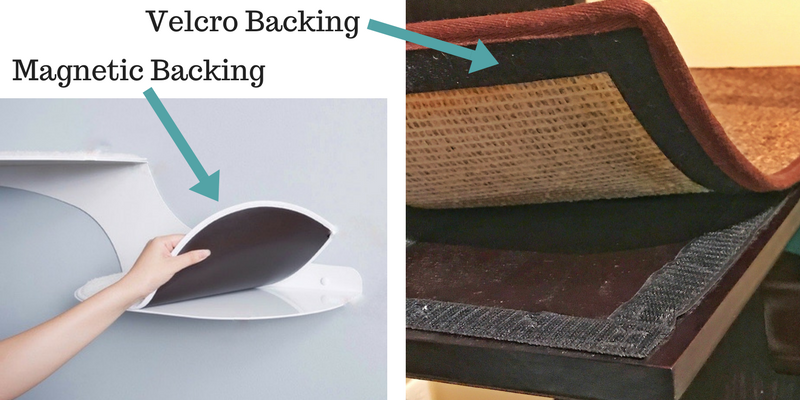
The Refined Feline uses Velcro for their Berber carpet covering on the Lotus Branch and Lotus Leaf Cat Shelves. And on their Cat Clouds and Cat Silhouette shelves, they use magnetic backing on their cushions. The Curve Cat Perch by Akemi Tanaka has fabric-covered cushions that snap onto the shelf. These progressive manufacturers understand that cats can be destructive and they know the first part to wear out on their shelves will be the covering. So it makes sense to offer an easy solution for changing out the covering without having to throw out the entire shelf.
Summary
To recap, the perfect cat shelf should be:
- Very stable (i.e. made of wood or stainless steel and mounted to wall studs)
- Big and deep enough for lounging (i.e. Minimum of 10” in depth)
- Covered in durable, anti-slip material (i.e. Berber carpet, sisal, foam padding)
- Attractive enough for the humans to display in a common room
- Easy to assemble with 2 people and a power drill
- Long-lasting (i.e. made of quality materials and have options for replacing carpet pieces when they wear out)
Now that we’ve covered all the bases when it comes to finding the right cat shelf, head on over to our Top Picks or Reviews to see how they all stack up.

